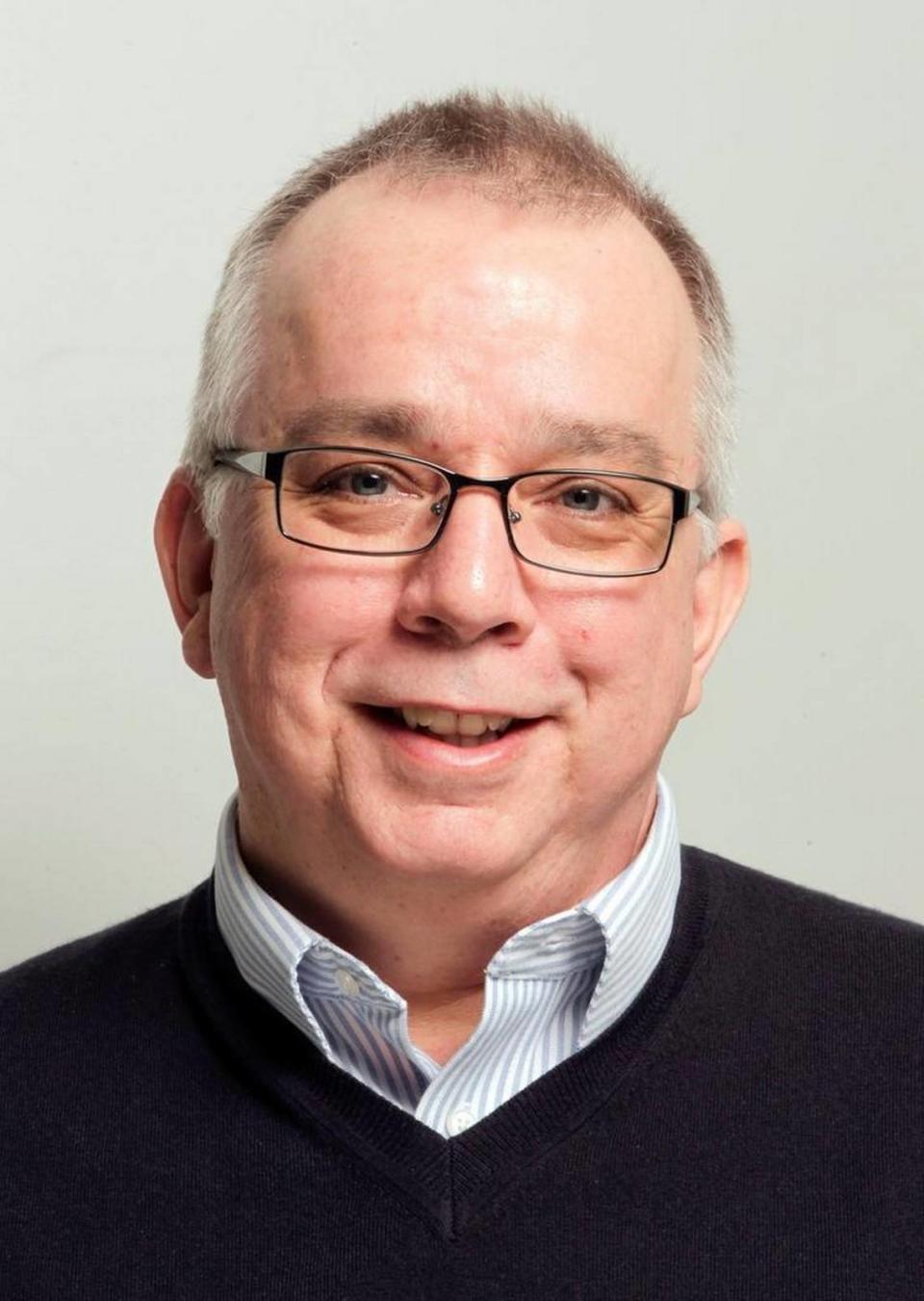The Pentecostal renewal continues to sweep the planet — and affect everyone | Opinion
- Oops!Something went wrong.Please try again later.
A couple of weeks ago I wrote a column — based on an earlier piece by New York Times pundit David French — about the three subdivisions of white born-again Christianity. Those three groups are fundamentalists, evangelicals and Pentecostals.
An editor friend suggested I follow up by explaining the internal division of Pentecostalism itself: between “old-line” Pentecostals (my term) and Charismatics.
If this topic sounds profoundly nap-inducing, don’t nod off. What happens with Pentecostalism today affects nearly everybody on Earth, not only spiritually but politically.
Scholars and journalists usually point to the landmark 1906 Azusa Street Revival in Los Angeles as the birth of Pentecostalism. That revival returned long-dormant gifts of the Holy Spirit written about in the New Testament — including prophecy, healing and speaking in tongues — to contemporary Christianity.
Led by a one-eyed Black preacher, William J. Seymour, the Azusa Street Revival was remarkably egalitarian. Seymour’s congregation was made up of black people, white people and Hispanics all worshiping together. Men, women and even children preached.
Derided by the press and established churches, the revival nonetheless spread around the world.
The Charismatic movement, occasionally called Neo-Pentecostalism, is a more recent offshoot. It erupted among mainstream Christian groups in the mid-20th Century, when nearly every established Christian denomination experienced its own Pentecostal renewal.
Taken together, the Pentecostal/Charismatic revival is the fastest-growing religious phenomenon on the planet, bar none. Reliable statistics for it are hard to pin down, but estimates range from a half-billion adherents worldwide to as many as 1 billion.
It’s hard to count precisely because Pentecostals and Charismatics are scattered among non-Pentecostal denominations, scads of specifically Pentecostal denominations and countless independent congregations ranging from tiny storefront churches to sprawling megachurches.
I’ve had long experience with both varieties of Pentecostalism, the older and the newer. I became a practicing Christian through the nurture of a Charismatic prayer group. In 1982, I was called as pastor of an old-line Pentecostal church, where I ministered for 14 years. Since 1996, I’ve led a rural Charismatic church.
Oh, I’ve seen it all, brothers and sisters. The beautiful and the grotesque.
To explain (and, alas, to oversimplify) the difference between Pentecostals and Charismatics, I’d say it historically has boiled down to two things: social class and holiness doctrines.
From its Azusa Street beginnings, Pentecostalism found its purchase among the marginalized. This is in no way a put-down.
The aspects of Pentecostal faith I find wonderful — its ecstasy, its openness to the Spirit, its embrace of radical social equality — owe much to the fact that it was originally made up of the struggling, the poor, the undereducated. Pentecostals weren’t deterred by the jeers of better-off, staid Christians. They were already used to being disrespected.
The movement’s founders, including Seymour, mainly came to Pentecostalism from the Holiness movement, which as the name implies placed a premium on “holy” behavior.
Pentecostals preached against all manner of supposed sins. Sometimes their rules veered into the petty: women couldn’t cut their hair, wear makeup or don pants, for instance.
Despite their remarkable freedom and joy, many Pentecostals adopted a legalistic, hellfire-and-brimstone persona. What a paradox!
And as their faith spread across the nation and the planet, in some locations the old Christian bugaboos of racial segregation and male dominance crept back in.
After a half-century of consignment to the rough-and-tumble outskirts of Christianity, Pentecostalism suddenly hit the mainstream. This was the Charismatic renewal.
An opening shockwave occurred in 1960, when an Episcopal rector named Dennis Bennett announced to his large, upscale congregation in Van Nuys, Calif., that he’d spoken in tongues. The story was picked up by local newspapers, wire services and national magazines such as Newsweek and Time.
Nearly every respectable denomination soon experienced its own version of this Pentecostal awakening. The members of the Charismatic prayer group who won me over were Southern Baptists. I was overwhelmed by their love and compassion.
This new openness of middle-class Christians toward Pentecostal practices created challenges for both groups. Church music in Methodist and Baptist services began featuring drums and electric guitars, to the consternation of traditionalists. Old-line Pentecostals encountered believers who laughed at restrictions regarding clothing, hair and jewelry.
It could be painful. The two factions still occasionally roll their eyes at each other. Largely, though, they’ve reached an uneasy assimilation. Today, it’s hard even for veterans like me to tell where the Pentecostals end and the Charismatics start.
As with all movements, the Pentecostal/Charismatic faith’s strengths also inspire its worst excesses.
As French wrote, “At its worst, the quest for miraculous experience can lead to a kind of frenzied superstition, where carnival barker pastors and faux apostles con their congregations with false prophecies and fake miracles, milking them for donations and then wielding their abundant wealth as proof of God’s favor.”
True that.
And in the United States, sad to say, some prominent white Pentecostal/Charismatic leaders have become mouthpieces for a strident Christian nationalism their forebears might have choked on.
As a longtime member of the movement, I often feel about it the way Churchill felt about democracy: it’s the worst form of Christianity … except for all the others.
Paul Prather is pastor of Bethesda Church near Mount Sterling. You can email him at pratpd@yahoo.com.


